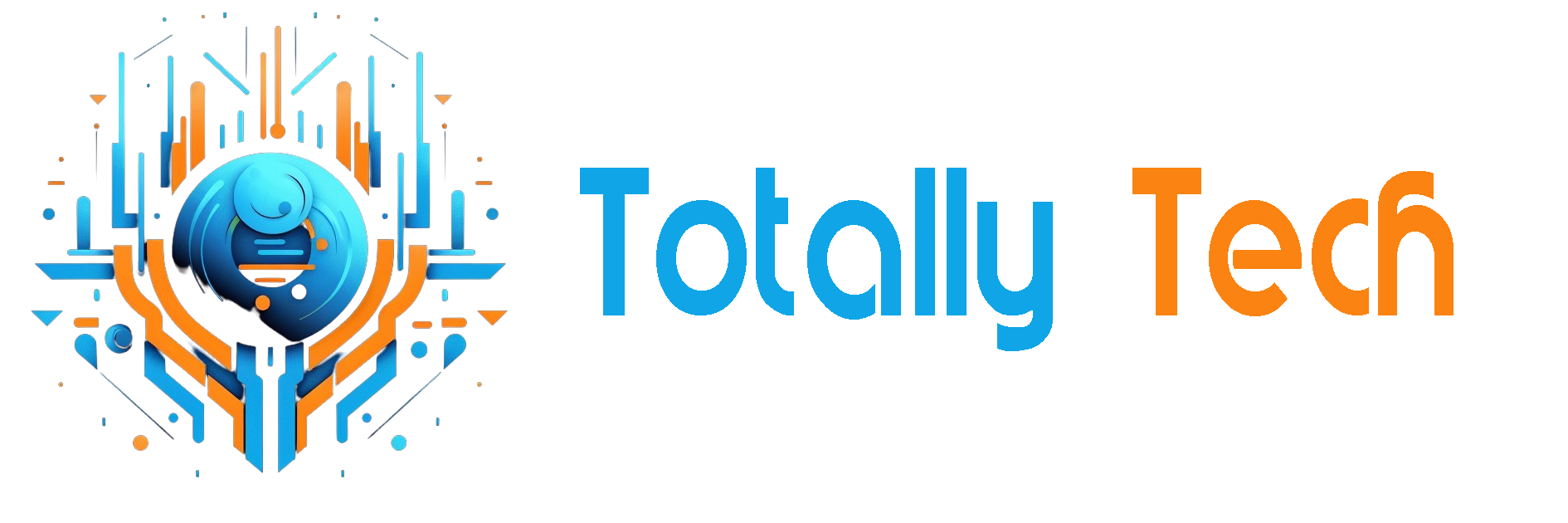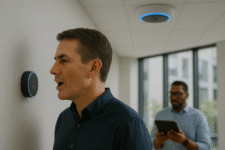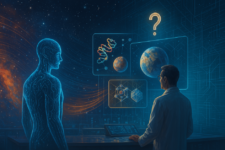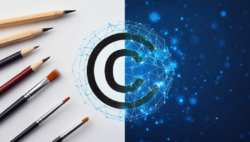
The US Copyright Office just released their most significant guidance yet on AI and copyright. This report cuts through the confusion about who owns what when it comes to AI-created content.
The law still centers on human creativity. The Copyright Office makes this crystal clear – copyright protection stems from human creative input, not from AI systems themselves. This means pressing “generate” is not enough to claim ownership of what your AI tool creates.
But here is what is really interesting: The Office is not saying “no” to AI – they are saying “show us the human touch.” They are drawing careful lines between using AI as a creative tool (which can be protected) and letting AI make all the creative choices (which cannot).
Core principles you need to know:
- Human authorship is essential
- Copyright protection requires human creative input
- AI systems are considered tools, like cameras or paintbrushes
- The key question: Is the work fundamentally human-authored?
- The prompt paradox
- Writing prompts, even detailed ones, generally will not get you copyright protection
- The Office compared it to rolling dice – you might keep trying until you get what you want, but you are not controlling how those dice land
- Simply picking your favorite AI output is not considered a creative act
- What actually counts
- Direct modifications to AI outputs
- Creative arrangements of AI-generated material
- Your original content that remains visible in the final work
This is just the start. And all of it is important as we see major advancements in technologies like AI image generation and AI music generation.
What Counts as Human Authorship?
Now into the core of what the Copyright Office considers “human authorship.” This matters because it determines whether your AI-assisted work gets legal protection.
What is human authorship?
The Copyright Office draws from constitutional foundations here – they define an author as “the person who translates an idea into a fixed, tangible expression.” When it comes to AI, they are looking for clear evidence that a human made the key creative decisions.
The Copyright Office ran an experiment that shows why prompts alone do not cut it. They tried a complex prompt with detailed instructions, but the AI made its own creative decision as to what to include and what not to include.
This showed the Office exactly why prompts do not equal authorship – you are not controlling the creative decisions, the AI is.
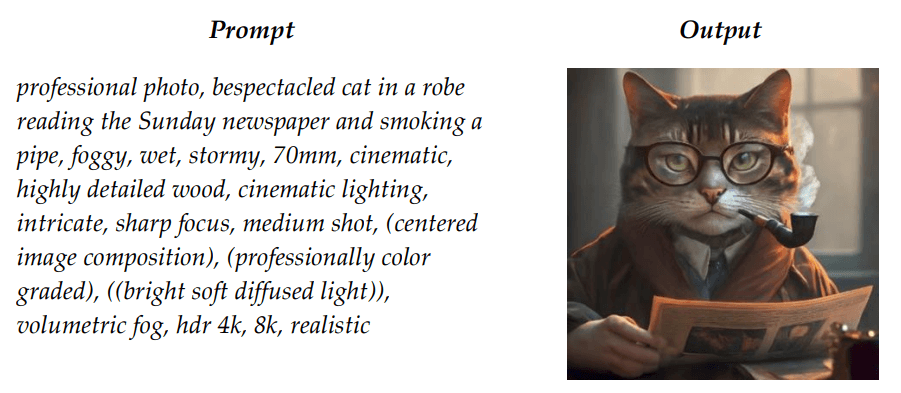
(US Copyright Office)
Think of it this way: even with identical prompts, AI systems produce different results each time. You might get something you like, but you are not directing the creative process – you are just picking from what the AI decides to make.
What actually qualifies as authorship:
- Active creation
- Making substantial changes to AI outputs
- Combining AI-generated elements in original ways
- Adding your own creative work that stays visible in the final product
- Creative control
- Guiding the artistic vision
- Making specific design choices
- Determining how elements come together
- Documented human input
- Your original content mixed with AI assistance
- Clear evidence of your creative decisions
- Traceable human modifications
This sets up clear standards: using AI is fine, but you need to show how you shaped the final work with your own creativity.
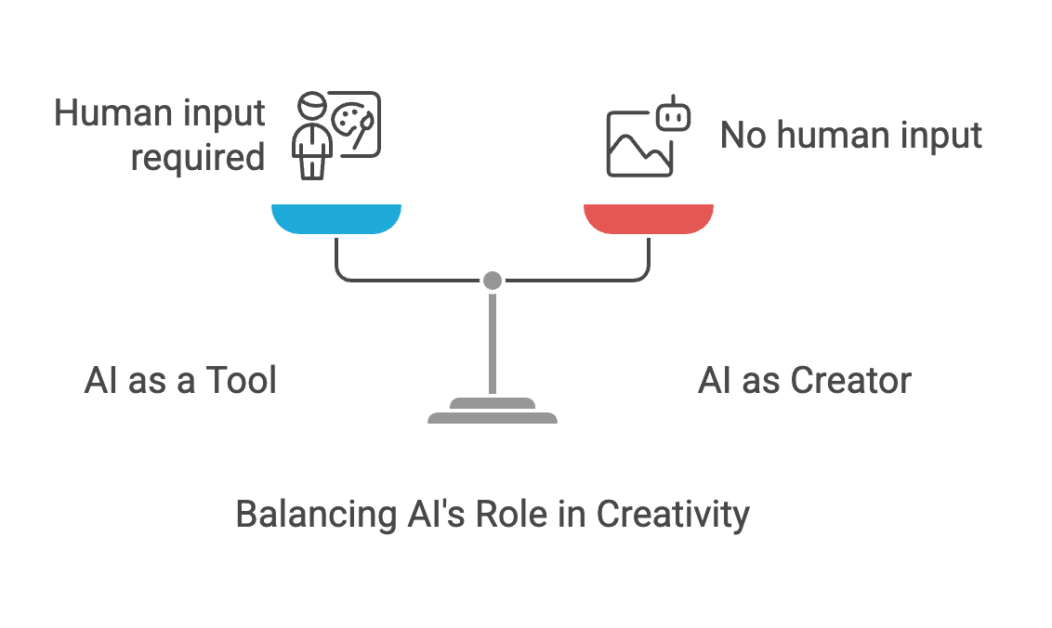
(Alex McFarland/Unite AI)
Requirements for Protection
The Copyright Office outlined specific technical requirements for registration. And these details matter.
When you are registering AI-assisted work, you will need to specifically disclaim “any non-human expression.” This means clearly separating what you created from what the AI generated. The Office will look for human authorship that is “clearly perceptible” and can be separated from the AI-generated elements.
This creates an interesting technical challenge. You will need to track and document your creative process differently than before. The Office wants to see the line between human and machine contribution – not to restrict AI use, but to protect the human elements.
Think of it like version control for creativity. Smart creators are now documenting their process in ways that highlight their creative control: saving iterations, tracking significant modifications, and maintaining clear records of their original contributions.
The international angle adds another layer to consider. While most countries agree that copyright requires human authorship, some take different approaches.
Going global with AI-created work? The approach to AI copyright is not uniform worldwide.
Most major countries share the US view that copyright needs human creativity. Korea, Japan, China, and the Czech Republic all agree on this core principle. But some take unique paths.
The UK and New Zealand stand out with special rules for “computer-generated works.” But even they are rethinking these rules as AI evolves. Canada’s still figuring things out, showing how fast this space is changing.
Your Guide to AI Copyright Success
Success with AI copyright is not about avoiding AI – it is about using it smartly.
Start with your creative vision. Use AI as a tool to enhance your work, not replace your creativity. Document your process, showing how you guided the creative direction.
Smart creators are treating their AI projects like any other creative work. They save versions, track changes, and keep clear records of their original input.
When you register your work, you will need to point out what’s yours versus what is AI-generated. Make this easier by documenting as you go.
The Copyright Office knows we are just getting started with AI. They are watching how the technology grows and how creators use it. They will undoubdetly update their guidance as new developments come to light.
But do not wait for perfect rules. The core principle is not changing: human creativity matters most. The Office will keep monitoring developments, but they are clear that existing copyright law works for now.
What matters is showing your creative voice. The winners will be creators who master this balance between human creativity and AI assistance.
Want to stay ahead? Keep documenting your process, maintain your creative control, and watch for updates from the Copyright Office. Your creative future depends on it.
The post US Copyright Office Releases New AI Guidance: What You Need to Know appeared first on Unite.AI.
